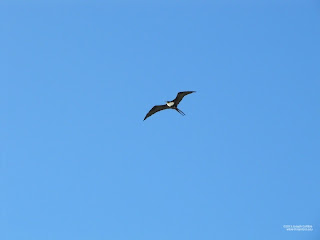First a story. Safety is a high priority on Palmyra given how far it is to the nearest hospital, doctor, etc. Everyone coming to the atoll is required to have insurance to cover emergency evacuation. As a scientific diver, I carry DAN insurance which includes the cost of emergency evacuation, so it was not problem for me.
When working on the outer reef, divers are tethered to a float with a dive flag attached. This makes it easy for the captain of the boat to track where the divers are even when the seas are a bit rough. Trying to follow the divers by just looking for their bubbles is difficult to do unless the seas are flat. Also, this allows the boat to be further away from the divers which is important when "live boating". Since the boat is not attached to a mooring or anchor, it is going to drift and have to run the engines occasionally to keep on station. While being tethered to the surface by a line is a pain, it is absolutely necessary. There usually were three of us diving together, so I avoided being the tethered diver whenever possible.
This gets me to my story. They would ask who is going to take "the Hoff", the red float that you see lifeguards using. I felt dumb never having heard of a Hoff before. I asked how to spell it since I was recording this in my dive log. I then had to ask why is it called a Hoff. It turns out it was nicknamed for David Hasselhoff of Baywatch fame who, along with the other lifeguards on the TV show, would carry this type of float to help when rescuing drowning victims.
The "Hoff" off the stern of the Zenobia
Now for some more animal pictures. I realized I was remiss by not including more bird photos. I have a lot of birder friends, so these are for you.
The most common bird I saw on Palmyra was the red-footed booby. They would usually follow the boat as it moved around the lagoon such as this one that was hovering above Doug's head. I was glad I was wearing a wide brimmed hat. It not only protected me from the sun, but also kept the guano off my head.
red-footed booby in flight
Sula sula
The baby red-footed boobies are flightless, so you could get quite close to them while they were perched in Pisonia trees. Often the tree branches extended over the water, so if they fell in, they were food for the black tip sharks.
baby red-footed booby
Sula sula
Here are a couple of other species of boobies.
brown booby
Sula leucogaster
masked boobies
Sula dactylatra
great frigatebird
Fregata minor






Hilarious on "The Hoff"! I also love just saying the red footed booby's scientific name out loud for fun....sula sula! Very soothing (or should that be 'soothing soothing'?)
ReplyDeleteI'm so glad you posted again because I can't stop thinking about Palmyra, either, and I'm really enjoying the continued vicarious living!